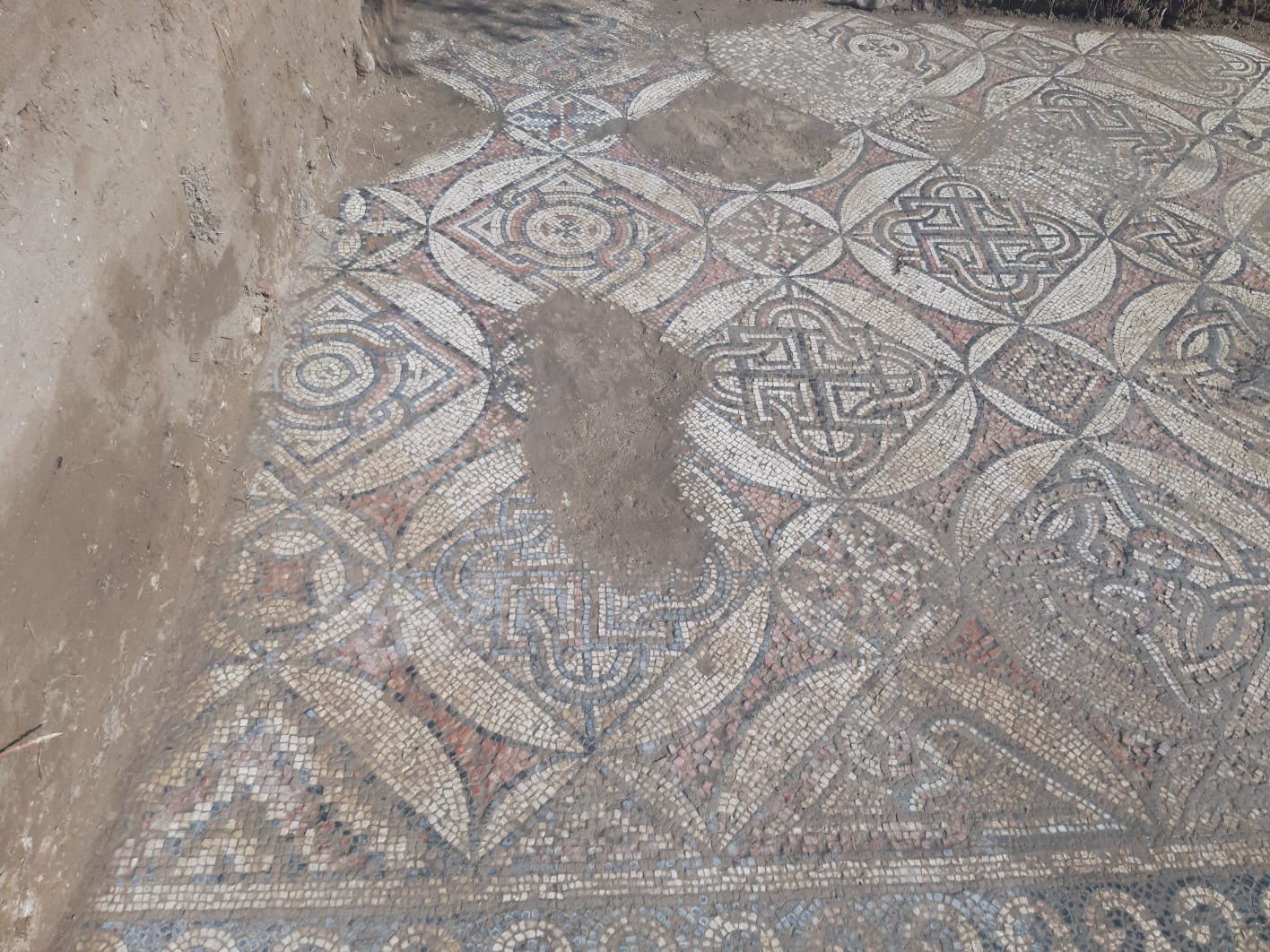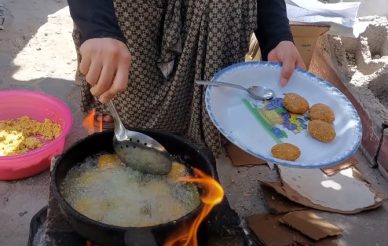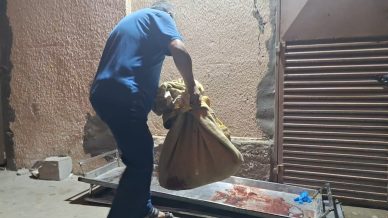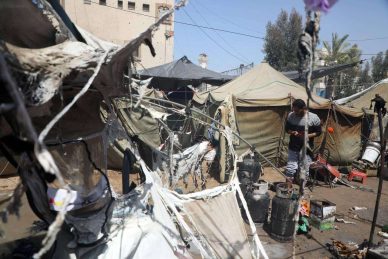The Gaza Strip has a rich history depicted at many archaeological sites and buildings dating back to different periods extending from the Canaanite era to the Ottoman era. Pharaohs Romans Byzantines early Christians and Islamic armies have passed through this coastal enclave as they connect Africa with Asia. Despite the Israeli occupation’s attempts to cleanse the area from relics throughout the years Gazans continuously uncover artefacts and antiquities of great importance and historical status under stones and in the sea.
Palestinian construction workers recently unearthed a Roman cemetery which contains more than 60 graves with a set of bones and artefacts from one tomb dating back to the second century at a site discovered earlier this year during construction work on an Egyptian-funded residential project in Beit Lahia in the northern Gaza Strip. The recently discovered Roman cemetery is near the ruins of the Greek port of Anthedon on the road leading to ancient Ascalon occupied by Israel and renamed “Ashkelon”.
Despite the need to construct homes for displaced people whose houses were destroyed during the last Israeli aggression on Gaza the excavation continues to uncover more from this trove of history.
During the past few years several traces have been discovered such as a statue of the Greek god Apollo a fisherman found in the Gaza Sea in 2013 estimated to be more than 2500 years old. Additionally this year a farmer in Gaza made the discovery of a statue of the head of the Canaanite goddess Anat in Khan Yunis in the southern Gaza Strip dating back to the Bronze Age and estimated to be 4500 years old! And this past spring a Palestinian farmer from the AlBuraij Refugee camp unveiled an ornate Byzantine-era mosaic which experts say is one of the greatest archaeological treasures ever discovered in the Gaza Strip.
The occupation the siege and the continuous assault on the Gaza Strip hinder tourism. According to Nariman Khillah an expert in Gaza archaeology “If Gaza is not occupied and besieged you would see the tourists and visitors from around the world visiting its beautiful archaeology.” She continued “So many sites can be visited and so many need to be unearthed but the lack of helpful materials for excavations lack of archaeological experts in Gaza the prevention of bringing experts from overseas lack of fund and above all the repeated Israeli airstrikes exacerbate the issue.”
Stunning Archaeology
“Gaza has a copious and staggering history of historical and archaeological objects and sites as Qasr al-Basha (Basha Palace). One of the most famous is located in the Old City of Gaza” Nariman comments noting that the buildings of this palace date back to the Mamluk period and it was the seat of the governor of Gaza in the Mamluk and Ottoman eras.
The Monastery of St. Hilarion is one of Palestine’s most important archaeological monasteries. It is an ancient hill in which a mosaic floor was discovered in 1994 dating back to the Byzantine era. The site hosts architectural formations for a church with a three-aisled basilica system that contains beautiful mosaic floors. Also among the great archaeological areas is the Byzantine Church in Jabalia considered one of the most important churches in the Levant dating back to 408 AD. It includes integrated architectural elements and colorful mosaic floors that depict normal life in the city of Gaza.
Stealing Archaeology
Nariman charged the Israeli occupation authorities of stealing and concealing any artifacts which show historic Palestine in order to prevent Palestinians from possessing any antiquities they may identify as part of their culture. Between 1972 and 1982 the Department of Antiquities at Hebrew University in Occupied Jerusalem in cooperation with American associations excavated antiquities in the Deir al-Balah area in the central Gaza Strip believing that this area contained Canaanite and cultural treasures. The area is the former southern capital of the State of Palestine. At that time archaeologists were able to uncover large quantities of antiquities. Under the policies of the Israeli occupation governing the region at the time all that was stolen was placed in the Rockefeller Museum in Occupied Jerusalem. The museum contains many Palestinian and Arab antiquities stolen from Lebanon and Sinai as well during their periods under occupation.
Tareq Alddaf public relations manager in the ministry of archaeology said that the antiquities sector like other sectors is impacted by the Israeli blockade imposed on Gaza as the Gazan technical staff and experts are not allowed to exit Gaza in order receive adequate training from practical experience abroad. Certain technical equipment is still prevented by the occupation from entering the besieged enclave he added.
The occupation is known to have practiced systematic theft of archaeological objects during its governance of Gaza. One such instance took place during the discovery at the archaeological site of Tell Umm Amer in 1993.
Palestinian witnesses have attested that Israeli helicopters acting on Moshe Dayan’s instructions removed the archaeological columns and capitals from the site. The occupation also destroyed ancient texts and mosaic floors at the site of the Byzantine Church in northern Gaza which was deliberately trampled by Israeli tanks despite its coordinates being listed as an archaeological area and it is documented in the UNESCO.
The mosaic floor at the archaeological site of Tel Batshan the former port of Gaza was removed by the occupation and altered by including the Star of David on it and it is still displayed in their museums. The occupation additionally stole archaeological holdings from the archaeological site of Tal al-Ajul which date back to the Bronze Age.
In spite of the occupation’s attempts to deny the history and presence of Palestinians in Palestine the revelations hidden under the land stand in clear attestation to Palestinian history in refutation of the occupation’s propagandistic narratives.
– Wafa Aludaini is a Gaza-based journalist and activist. She contributed this article to the Palestinian Information Center.















